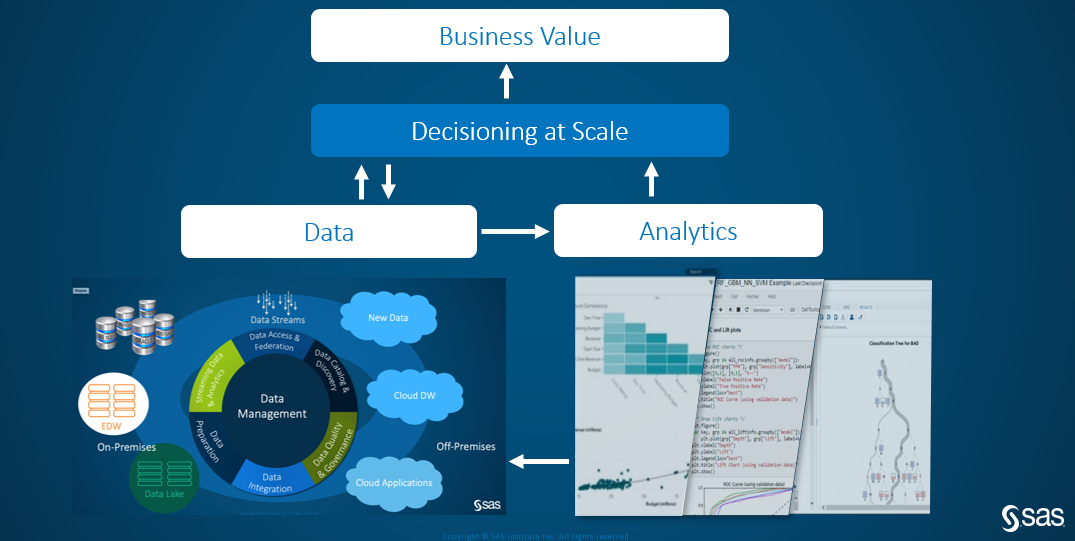Taking a decision is easy. However, living with the outcome might be problematic because every decision is a choice that leads us to an action that will affect others. And trust – what about this elemental human feeling? As children, we trust our parents. This kind of trust forms the basis of all our later lives. For me, trust is to believe that an action will result in good things. Or if it doesn't, that the intentions were good.
I see several examples of trust in the decision process, for example, organ transplants. It’s a critical situation where a resource given to one person can save a life but also be the death sentence to the other.

Saving a community
Or take any kind of cataclysm. A decision to save a community is equivalent to saying that others will encounter negative experiences – and which community should we leave behind? This also reminds me of autonomous driving. Who should be protected in the event of an accident? The occupants? The pedestrian? What if the pedestrian is a young person and the occupant is an old one (or vice versa)? And there are many other situations that aren't life or death – things as “simple” as traffic control and delivery routes.
Having all this in mind, it’s critical for our survival that AI-driven decisions are trustable decisions. Just because we make a multitude of decisions each day. And more and more, AI affects every area of our lives.
Now, what does data fabric have to do with my thoughts about decisions and trust? Data fabric is a concept, rather than a solution by itself, to map with the modern data landscape. But the concept is not that new. The idea of a fabric interconnecting computing resources to provide centralised access to all the data has been around since the 1990s when the concepts of grid computing and data hubs started.
And now it becomes technical
A data fabric includes cloud data warehouses, data sets, files, data lakes, enterprise data warehouse and data marts, operational databases and data streams. It also includes traditional and new computational environments like cloud, in memory, edge and streaming, and should include everything necessary to support the analytics life cycle, from data to actionable and trustable decisions.
Implementing data fabrics concepts has become very important as data sources are more diversified than ever before and the landscape much more complex. Just think about the data silos created with the increasing availability of cloud storage, the isolated use case-based IoT project approach and the operationalization of app-driven tasks.
All this drives a series of business challenges, including data availability, data access, data quality, data protection, data privacy, data fit for purpose and data ethics. But it also drives opportunities. You can modernize and simplify the data infrastructure, automate and standardize data preparation jobs, cluster and process data in place to optimize data movement, leverage all data for analytics and decisioning, use AI/ML for easy self-service analytics, and so on. All of this converges into the ultimate goal of optimizing time to value and, therefore, business value.
What’s needed to make it work?
At the core of optimizing time to value from data to actionable and trustable decisions is a strong, comprehensive and versatile data management platform that should have five key capabilities.
- Data access and federation. Connect to data rather than moving data. Access any data – including streaming and IoT – at all times in a controlled and compliant manner.
- Data catalogue and data discovery. Profile data sources, discover and tag sensitive data, and maintain data and metadata inventory.
- Data quality and data governance. This includes data profiling, cleansing and remediation, completion, monitoring, a glossary or semantic layer, data lineage, and data catalogue maintenance.
- Data integration. Combine disparate data, applying data quality and governance to create complete and integrated data sets. Manage data flows and stewardship processing.
- Data preparation: Driven by self-service data access in the fabric, including automated data discovery, quality and stewardship, and generating data fit for purpose for analytics.
Ultimately, it’s all about believing and trusting
All starts with the data! Just as we believe and trust that the decisions our dear ones take on our behalf are the best possible for us, in our best interest and respect our core principles, business decision makers also must believe and trust in the data they have access to and are using to take decisions that might have big impacts on the organisation and on society. All ends generating data! As all decisions generate actions (doing nothing is also an action) and those produce an outcome – a result, an impact – we must mind that those outcomes will be sourcing other decisions.
Check out this webinar to learn more about decisioning: Leverage Data Fabrics for Analytics and Decisioning.

